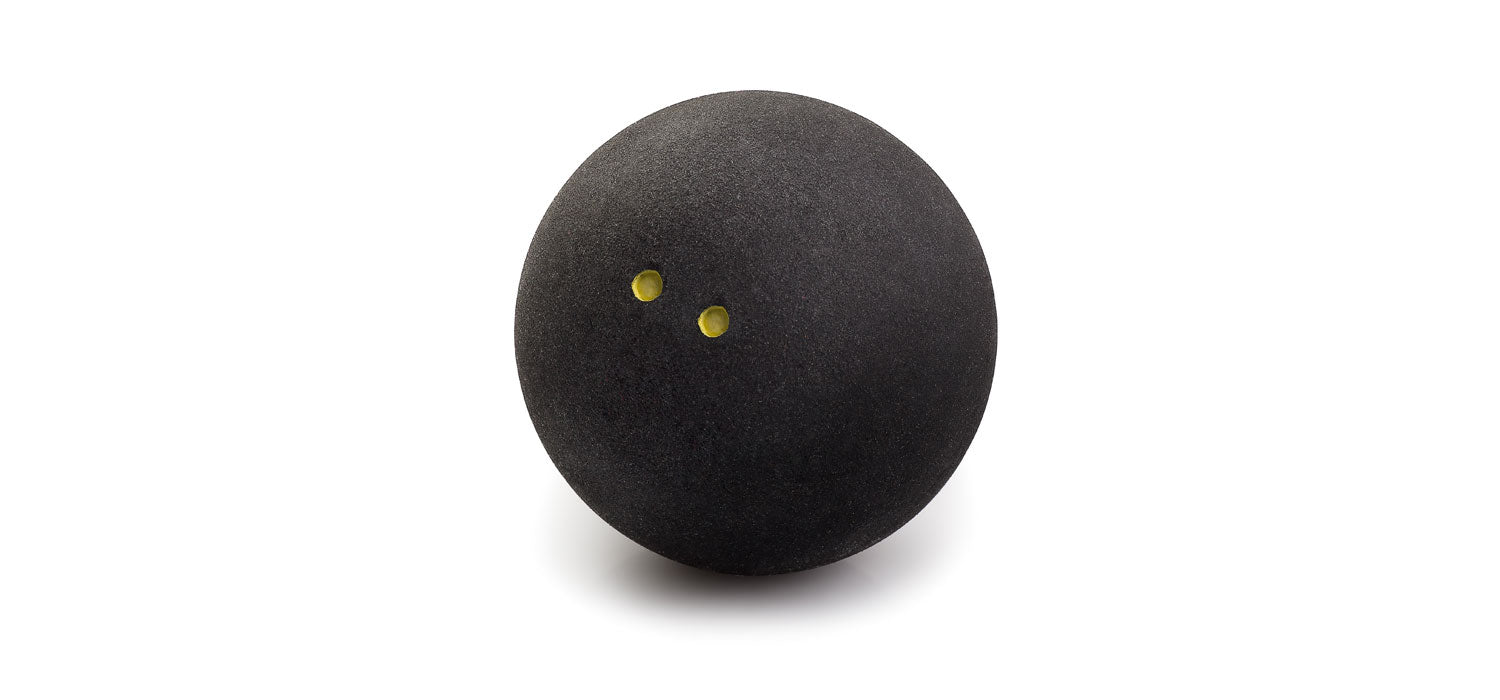What do the dots on a squash ball mean?

The dots on a squash ball are not just decorative; they indicate the ball's specific level of bounce and are used to classify squash balls based on their speed or "dot" rating. Squash balls come in several different dot ratings, and each dot rating corresponds to a specific level of bounce. The dot ratings are standardised by the World Squash Federation (WSF) to ensure consistency in the game. Here's what the dots mean:
- Double Yellow Dot: The double yellow dot squash ball is the slowest and has the lowest bounce. It is typically used by professional players or very advanced players. This ball requires a high level of skill and fitness to play effectively as it stays low and requires more effort to generate pace.
- Yellow Dot: The yellow dot squash ball is slightly faster than the double yellow dot but still has a relatively low bounce. It is suitable for experienced club players who want a bit more bounce and pace in their games.
- Red Dot: The red dot squash ball has a medium bounce and is often recommended for intermediate players. It offers a good balance between control and pace, making it suitable for players developing their skills.
- Blue Dot: The blue dot squash ball is the fastest and has the highest bounce. It is designed for beginners and less experienced players who are still developing their technique and looking for more time to react to the ball.
The choice of squash ball dot rating depends on your skill level and playing style. Advanced players often prefer the slower double yellow dot or yellow dot balls because they demand greater control and accuracy. Intermediate and beginner players may opt for the red or blue dot balls to help develop their skills and enjoy a more forgiving bounce.
It's important to use the appropriate squash ball for your skill level to ensure a fair and enjoyable game. If you're uncertain about which dot rating to use, consult with your coach or fellow players to determine the best fit for your playing level and style.
